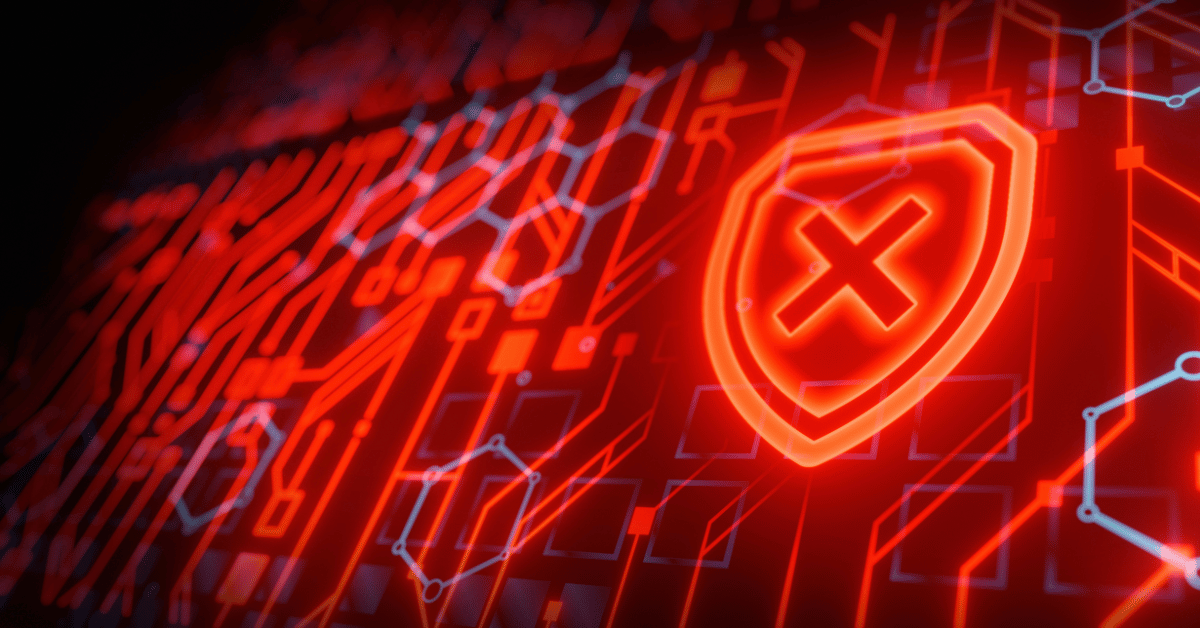The role of a Chief Information Security Officer (CISO) has rapidly evolved in recent years. CISOs are now tasked with protecting the business from emerging cyber threats while ensuring that productivity is not adversely impacted. Finding the balance between these seemingly opposing objectives can be challenging. However, by implementing a strategic approach that blends awareness, streamlined measures, robust access controls, incident response preparedness, and judicious security decisions, CISOs can create a cyber-resilient environment that supports business productivity.
Finding Balance Between Cybersecurity and Productivity
As a Chief Information Security Officer, one of your most pressing responsibilities is striking the right balance between robust cybersecurity and fluid business operations. In other words, you must create a secure environment that doesn’t impede your team’s efficiency or innovation.
Mastering this balancing act requires aligning your cybersecurity strategy with your company’s broader business objectives. This alignment not only provides a robust shield against potential cyber threats but also promotes seamless business processes and enhances end-user productivity.
To strike this balance effectively, it’s crucial to consider the unique aspects of your organization’s work dynamics and its associated cyber vulnerabilities. You may need to leverage custom-fit security solutions and policies that offer flexibility to your employees while retaining the much-needed security controls.
For instance, you might opt for a multi-factor authentication process that is robust yet user-friendly, or implement a cloud-based security solution that provides necessary safeguards without impacting accessibility or flexibility.
Another key element is frequent and clear communication about security measures and their importance in the overall business context. Keeping all stakeholders informed about their role in maintaining a secure environment can help you in managing the perceived trade-off between cybersecurity and productivity.
Remember, a well-balanced cybersecurity posture isn’t about making drastic compromises on either side. Instead, it’s about creating a symbiotic relationship where productivity fuels security and vice versa. Such an approach helps in creating a resilient business ecosystem that flourishes in the face of ever-evolving cyber threats.
Addressing Employee Cybersecurity Awareness
Building a robust cybersecurity culture within an organization is no easy feat, yet it plays a pivotal role in maintaining the balance between a secure environment and thriving productivity. For CISOs, the journey towards achieving this balance starts with enlightening employees about the fundamentals of cybersecurity.
Training and awareness sessions shouldn’t be merely annual or quarterly box-ticking events. They need to be continual, comprehensive, and engaging. From understanding the different types of cyber threats to the nuances of identifying a phishing email, every bit of knowledge empowers employees to become the first line of defense against cyber-attacks.
Consider implementing interactive training modules that offer real-world examples and practical tips for employees to guard against potential threats. Simulations, for instance, provide an excellent platform for them to put their learning to the test, identify gaps, and seek necessary improvements.
At the same time, encouraging a proactive approach towards cybersecurity is essential. Employees should feel comfortable reporting potential security threats or incidents without fear of blame. Establishing secure, anonymous reporting channels can aid this, reinforcing the idea that everyone plays a part in safeguarding the organization’s digital assets.
However, remember that cultivating this culture isn’t a one-and-done deal. As cyber threats evolve, so too should your awareness programs. Keep them updated, relevant, and engaging to ensure employees are always equipped with the latest knowledge and best practices.
Ultimately, the key lies in transforming cybersecurity from an imposed mandate to a shared responsibility. By fostering an environment of awareness, understanding, and vigilance, CISOs can nurture a workforce that’s not only productive but also secure.
Streamlining Security Measures
One of the critical gears in the engine of a secure yet productive business environment is the efficient streamlining of security measures. This strategy doesn’t just fortify your cyber defense – it also paves the way for seamless operational workflows.
So, what does streamlining security measures entail? At the heart of it is the centralization of security management systems. Imagine being able to oversee and control your entire network’s security from one central hub. This setup offers a holistic view of the organization’s network, aiding the quick identification and mitigation of potential risks.
Moreover, centralization provides an ideal platform for the automation of security tasks. Routine tasks like patch management, vulnerability scanning, and event log monitoring can be automated, ensuring that they are executed promptly and precisely. Automation can drastically cut down on the time your security team spends on repetitive tasks, giving them more bandwidth to focus on strategic cybersecurity initiatives.
However, it’s worth noting that automation doesn’t mean losing the human touch in cybersecurity. Instead, it enhances human efforts by removing the burden of repetitive tasks. It’s like having a tireless assistant who is constantly vigilant, ensuring that all routine security measures are implemented without fail.
It’s also essential to integrate cybersecurity measures with other business applications. This ensures that security protocols don’t disrupt business operations but instead work in harmony with them, enhancing overall efficiency.
An additional benefit of streamlined security measures is the reduction in chances of human errors. With automation, there’s a lower likelihood of tasks being overlooked or incorrectly implemented. This not only boosts the overall security posture but also contributes to a more stable and productive work environment.
Remember, cybersecurity isn’t about creating a fortress that impedes business operations. It’s about building a protective yet flexible shield that aligns with business processes. And that’s where streamlining security measures come into play. They create a delicate balance without disrupting the balance between cybersecurity and productivity.
So, as a CISO, focus on creating a cybersecurity strategy that doesn’t feel like an obstacle course for your team. Instead, it should be a well-laid path that protects, supports, and empowers them, fueling business productivity in a secure digital environment.
Implementing Effective Access Controls
Elevating your cybersecurity strategy to the next level requires a focused approach towards access controls. Often, breaches and data leaks are the result of misplaced trust or an overly generous access policy. It is, therefore, crucial to develop and enforce strict yet flexible access controls that align with your organization’s security needs and business objectives.
At the core of effective access controls lies the ‘principle of least privilege’ (PoLP), a concept that is as effective as it is simple. It involves providing employees with only the bare minimum access necessary to execute their tasks. This approach significantly reduces your organization’s attack surface and keeps the risk of insider threats at bay. The beauty of the PoLP is that it keeps your business secure without becoming a roadblock in the way of your employees’ daily operations.
However, implementing effective access controls isn’t just about restricting access. It’s also about creating a smooth user experience. Employees should be able to access the resources they need quickly and efficiently. To achieve this, consider employing role-based access control (RBAC). This approach involves assigning access rights based on an individual’s role within the organization. As a result, you can ensure that each user has just the right amount of privilege to perform their work, nothing more, nothing less.
Moreover, employing a strong identity and access management (IAM) solution can automate the access control process. It ensures that only authenticated and authorized users gain access to your systems, reducing the risk of unauthorized access or breaches. It can also streamline user onboarding and offboarding processes, saving your IT team’s valuable time and resources.
In a nutshell, effective access controls should form an integral part of your cybersecurity strategy. While their primary goal is to enhance security, they should not impede productivity. By implementing a carefully planned access control strategy, you can strike a harmonious balance between keeping your organization’s data secure and ensuring a seamless user experience.
Prioritizing Incident Response Preparedness
A well-executed incident response plan serves as an invaluable lifeline in the stormy seas of a cybersecurity breach. Its objective is straightforward – when a cyber incident rears its ugly head, your organization should be able to navigate the situation swiftly, minimizing potential damages, and ensuring business continuity.
An effective incident response strategy is much more than a set of written instructions gathering dust in a filing cabinet. It is an active, living document that must be routinely tested, updated, and communicated across the organization. It includes well-defined roles and responsibilities to avoid confusion or delays during an incident. It also stipulates efficient communication channels to ensure that the right people have the right information at the right time.
However, the work isn’t done once the immediate crisis is over. A vital component of an effective incident response plan is a thorough post-incident analysis process. The aim here isn’t to point fingers or assign blame but to dissect the incident and understand how it occurred. This valuable insight can help identify potential gaps in your cybersecurity strategy and drive necessary improvements.
Remember, the aftermath of a cyber incident can be just as critical as the incident itself. Organizations that can learn from these incidents and adapt their strategies accordingly will be better prepared for any future threats.
In the same vein, it’s crucial to note that incident response isn’t a standalone process. Instead, it’s intrinsically linked with other aspects of your cybersecurity strategy. For instance, a well-executed access control strategy can help prevent incidents in the first place, and an educated workforce can spot potential threats before they escalate into full-blown incidents.
In essence, incident response preparedness isn’t just about responding to incidents. It’s about having the foresight to anticipate potential threats, the agility to act swiftly when an incident occurs, and the resilience to learn and grow from each experience. Prioritizing incident response preparedness within your cybersecurity strategy can help your organization strike the delicate balance between maintaining a strong security posture and ensuring seamless business operations.
Maximizing Security Without Sacrificing Functionality
Navigating the complex landscape of cybersecurity solutions can seem like a daunting task for any CISO. The key, however, lies in selecting security products that do not merely protect but also foster productivity and agility. When evaluating these solutions, your guiding principle should be: maximum security without unnecessary complexity.
Security solutions should effortlessly blend into your organization’s workflow rather than disrupting it. Look for features that make these tools easy to use and integrate with your existing systems. A solution with a user-friendly interface not only enhances adoption rates but also reduces the time and resources spent on training and troubleshooting.
It’s also beneficial to lean towards solutions that boast automation capabilities. Automated cybersecurity products effectively reduce the workload of your security team, freeing them to focus on more strategic tasks. This not only bolsters your cybersecurity stance but also improves the overall operational efficiency.
Scalability is another crucial factor to consider. Your organization’s security needs will inevitably grow and evolve along with its operations. Opting for scalable solutions equips you to adapt to this changing landscape without continually having to switch or upgrade your security tools.
In conclusion, the goal of a well-rounded cybersecurity strategy isn’t to create an impenetrable fortress at the expense of business functionality. Instead, it’s about building a flexible, resilient defense that seamlessly aligns with your organization’s workflows and objectives. By choosing security solutions that support this approach, you can enhance your organization’s cyber defense without sacrificing the productivity and agility that fuel its growth and success.
Try Portnox Cloud for Free Today
Gain access to all of Portnox's powerful zero trust access control free capabilities for 30 days!









